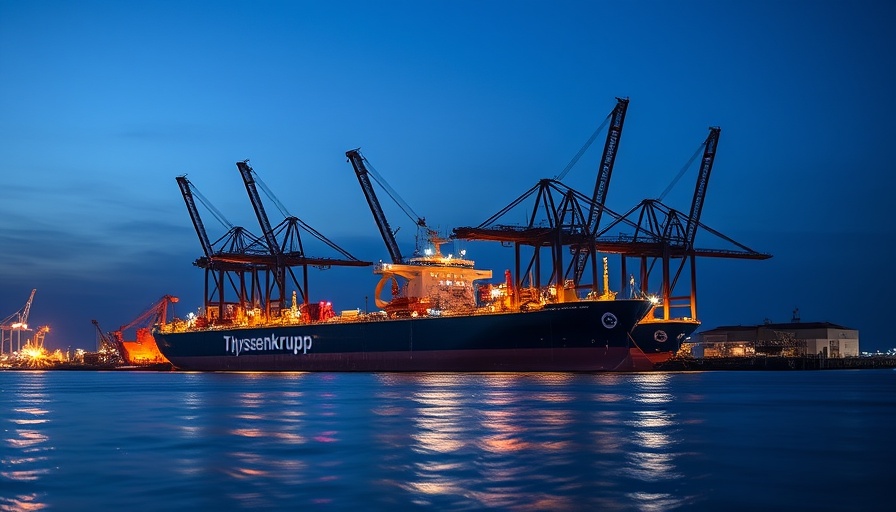
PT PAL Indonesia Steps Up: MRO Support for U.S. Navy Ships
In an exciting development for maritime defense, PT PAL Indonesia has announced its plans to provide Maintenance, Repair, and Overhaul (MRO) support for U.S. Navy ships. This collaboration marks a significant step in enhancing the operational capabilities of the U.S. Navy while fostering stronger ties between Indonesia and the United States, especially in defense technology and naval logistics.
A New Era of Collaboration
This new venture builds upon Indonesia's robust shipbuilding capabilities, which have been steadily advancing in recent years. As the Indonesian Navy seeks to modernize its fleet, partnerships with global powers like the U.S. Navy provide not only technological advantages but also economic benefits for local shipyards. This collaboration exemplifies the evolving dynamics of global defense partnerships, which are increasingly vital in maintaining regional stability.
Why MRO Support Matters
Maintenance, Repair, and Overhaul services are critical for extending the lifecycle of naval vessels. Ships face wear and tear from their heavy operational schedules, especially in challenging environments like the Indo-Pacific. Effective MRO services ensure that fleets remain combat-ready and capable of executing their missions without unnecessary delays, which could arise from prolonged out-of-service periods.
Parallel Developments in Global Defense
PT PAL Indonesia is not alone in recognizing the importance of quality MRO support. Worldwide, nations are investing heavily in strengthening their naval capabilities. For instance, the U.S. has been focusing on fostering partnerships with other nations, encouraging local repairs and upgrades to improve fleet readiness while also stimulating the local economy. This trend highlights a significant shift towards outsourcing certain defense capabilities, benefiting both local industries and foreign militaries alike.
Defense Innovation and Future Trends
As PT PAL Indonesia forges ahead with MRO support initiatives, it positions itself at the forefront of innovation in naval support services. The ambition to adopt advanced technologies in MRO processes underscores a broader trend in defense sectors, where proactive measures are essential for readiness in an increasingly complex global security landscape. This strategic positioning could pave the way for Indonesia to become a regional hub for naval maintenance and repair, attracting interest from other countries looking to optimize operational efficiency.
Potential Challenges Ahead
Despite the promising outlook, several challenges remain. The integration of advanced technologies, training skilled personnel, and establishing comprehensive support networks will be crucial. Furthermore, navigating the complexities of international defense relations can be a double-edged sword, requiring careful management of both political pressures and industry standards.
Why This Matters to You
The enhancement of MRO capabilities not only impacts military readiness but also resonates with broader themes of technological innovation and economic growth. As PT PAL Indonesia embraces this opportunity, it serves as a beacon for advancements in technology and industry resilience, relevant for anyone interested in the interplay of defense and economic dynamics.
Your Insights into the Future of Naval Operations
As global maritime operations evolve, monitoring developments in MRO support will be crucial for understanding upcoming trends. The significance of partnerships like these cannot be overstated; they pave the way for more robust defense strategies and a more interconnected world. Staying informed will ensure that the implications of such collaborations are understood, highlighting how they influence not just military strategies but also international relations.
In conclusion, PT PAL Indonesia’s collaboration with the U.S. Navy represents an exciting frontier in naval support. As innovations in MRO capabilities unfold, the potential for enhanced maritime security, economic growth, and regional stability becomes increasingly apparent. Let’s continue to track these developments and reflect on how they might affect both local and global perspectives.
 Add Row
Add Row  Add
Add 




Write A Comment